| One of the buildings
contains a collection of prized china, cut glass and other family
heirlooms deemed so precious that they warranted a space on the wagon. It surprised
us how much of it was made in Staffordshire. | 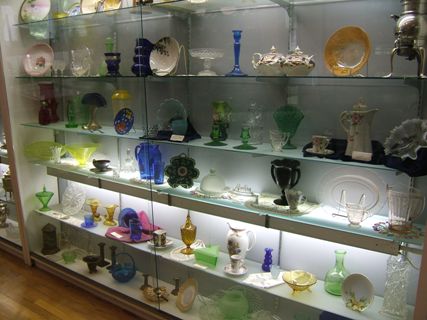 |
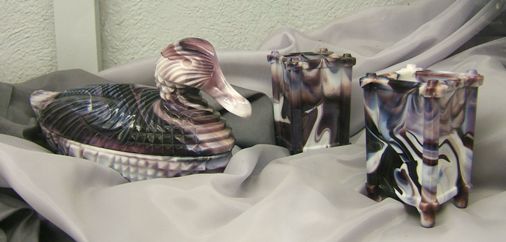 |
Sometimes Jan and I wander round separately photographing things which catch
our eye. It is amazing how often our tastes coincide as with this beautiful
coloured glass. |
| These plates are examples
of the work of Charles Dana Gibson who created the 'Gibson Girls'. He was
one of the highest paid illustrators and specialised in the typical American
girl at various occupations, usually outside. | 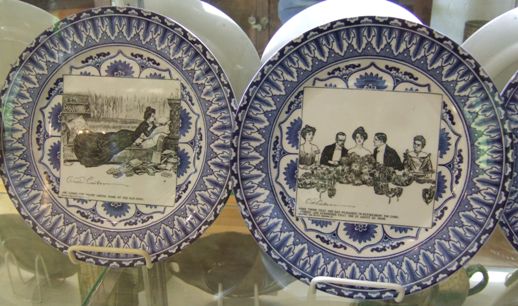 |
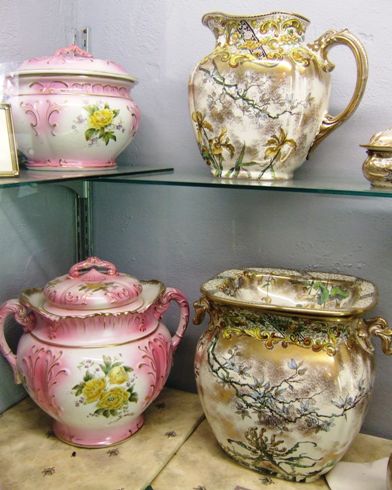 |
A collection of Staffordshire pots. A true expert would be able to identify
these. Antiques Road Show would have a field day here. |
| One barn sized building
is devoted to homes and shops with 20 room settings showing styles and crafts
through the decades. This is a typical early kitchen, probably about 1890. | 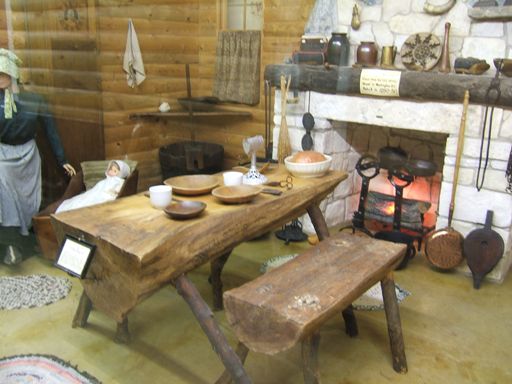 |
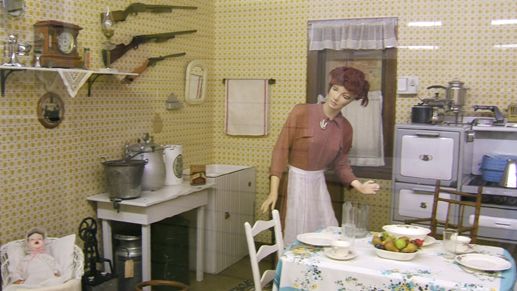 |
This is more 1930. We were struck by the rifles still on the wall ready to
hand, although the danger of marauding Indians is long gone. |
| It was a quiet day so
only a few people were in demonstrating crafts. This lady is spinning alpaca
wool, which will eventually be used to knit a scarf for sale in the gift
shop. She could be almost
anywhere in the western world any time in the 19th or early 20th century. | 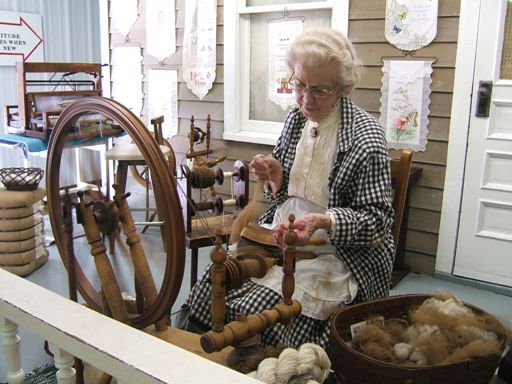 |
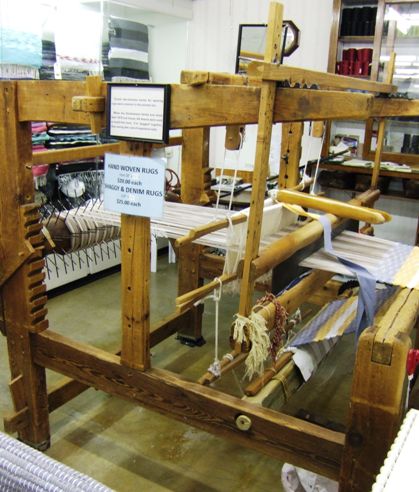 |
The lady here was weaving rag rugs, but I was more interested in the loom.
When the east was first colonised the manufacture of looms was controlled if
not banned, but later, out here in the
west, there was no control, but you had to design and build it yourself. The
builder here knew what he was doing. |
| We got caught by the
broom maker who demonstrates the early days of manufacture (as opposed to
totally hand made), and who was determined we would learn all the arcane mysteries of
his craft. Interesting, but time consuming. Today the materials come from
South Africa! The products of his labour are also sold in the gift shop. | 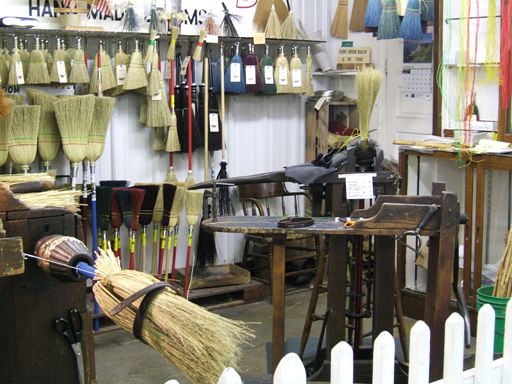 |
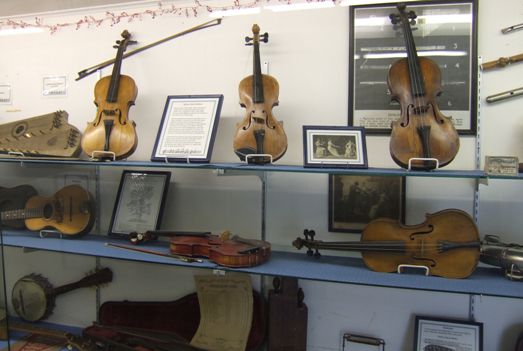 |
There is a large collection of musical instruments with some notes on their
pedigree. These are serious instruments by makers such as Stradivarius.
Music was an important part of country life when all entertainment was home
based, and I suspect there were some
very accomplished musicians. |
| I can see how the violins
might have been carried but the cello and particularly the harp is stretching it a
bit. Harps are notoriously difficult to keep in tune, and especially so in this unpredictable climate. But there
is also an extensive
display of grand pianos and organs. I remember reading about one that the
Mormons buried somewhere around here when their wagon proved too heavy, and
they came back for it the following year. | 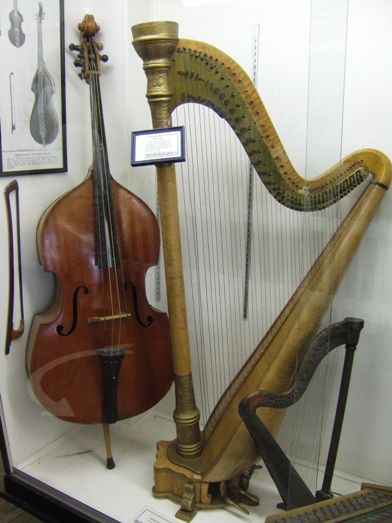 |
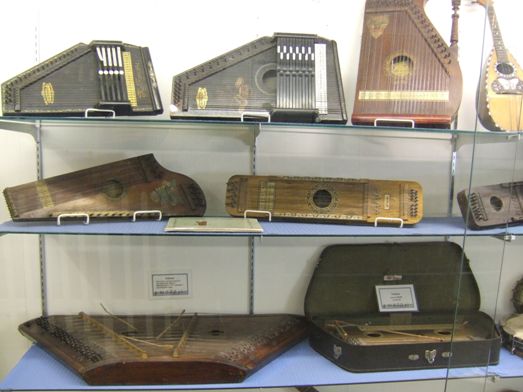 |
I was interested in the number of traditional instruments with origins in
more eastern parts of Europe and even Asia. But then dulcimers have been
around for centuries. |
| Besides the room settings
there are shops. These sorts of displays always seem to include a pharmacy
although some of the contents of the bottles seem a little bizarre today. | 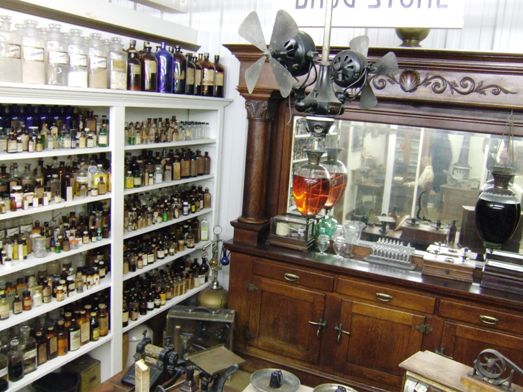 |
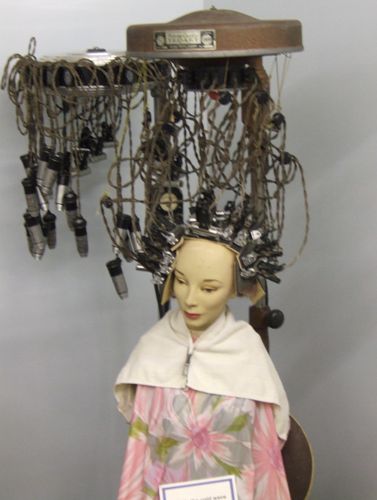 |
Now this is scary, and all to put a curl in your hair! |
| One day when I have lots
of money and space I'm going to collect clocks. The traditional grandfather clocks
were too big to bring along but mantle clocks were possible, and then
craftsmen started to produce them here, with equal attention to the
engineering inside and the decoration outside. | 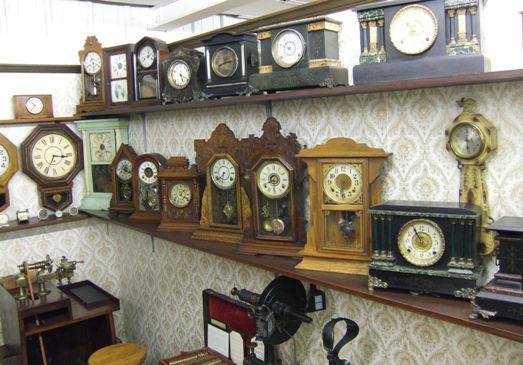 |
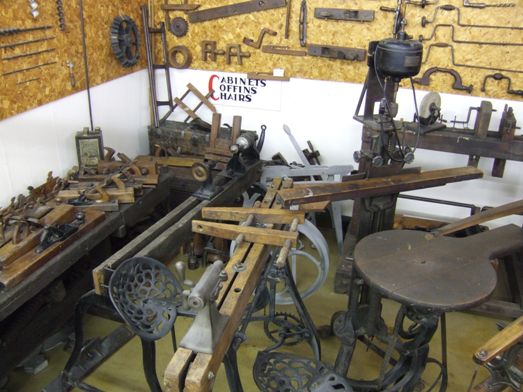 |
In this age when everything comes from the Swedish factory in a flat pack,
it is salutary to remember that in the last century everything was made with
hand tools, and the practitioners were very skilled. |
| But overall it is the
scale of these collections which is amazing. This is a complete floor which
looks like a furniture store through the years. Most of these pieces have their dates and
original prices on. Today the prices seem ridiculous but would have
represented several days' or weeks' wages then. Most of it seems to be in
excellent condition for its age. | 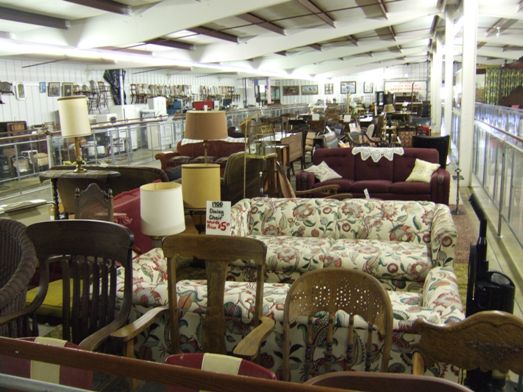 |
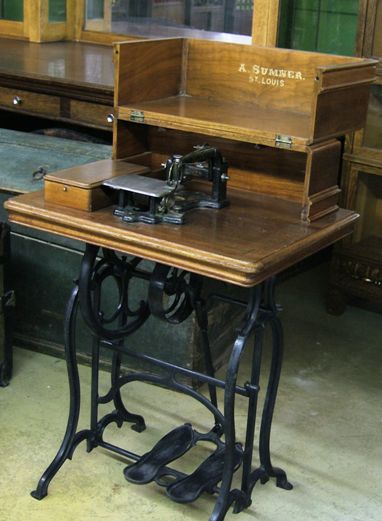 |
We started looking for a sewing machine for Jan when we came over here, but this
isn't quite what we had in mind. This would have seemed to be a miraculous
machine in the mid 1800s, speeding up the making of clothes and furnishings
immensely. |
| The local radio ham
society has taken over one corner to show the place of radio in keeping the
communities in touch. This collection of radio valves is amazing to me as
an electronics engineer. I can remember some of these still being in use
when I started work! | 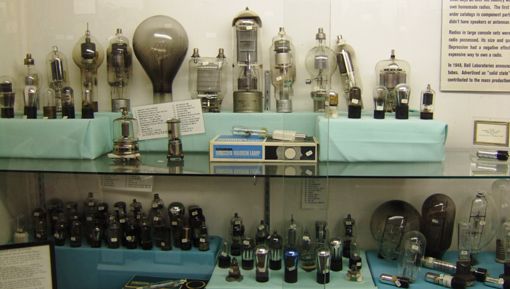 |
|